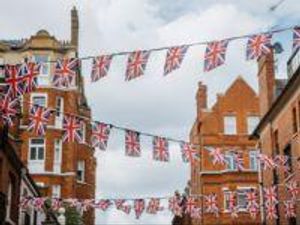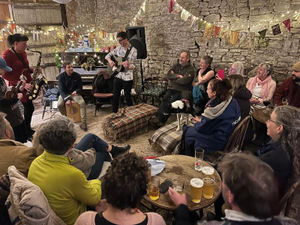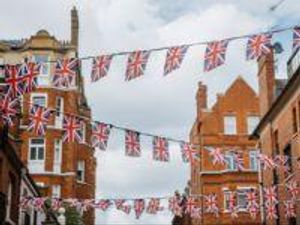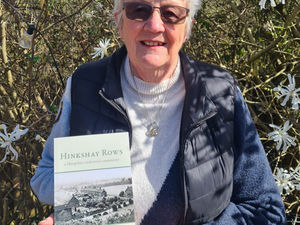George's heartbreak as critics turned against his happy minstrels
Top two places in the album charts, an international hit stage show which routinely broke box office records wherever it went, a television show which ran for 21 years and achieved monster ratings which crushed the opposition... this was success never to be repeated.
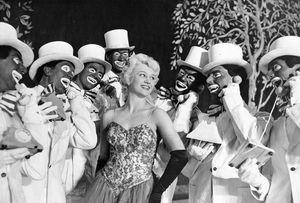
Never to repeated, that is, except in brief snatches on those looking-back television programmes with the underlying theme of "what on earth were they thinking of?"
There is even an urban myth that the BBC became so ashamed of The Black and White Minstrels that it wiped all the tapes.
In old age, and increasingly frail, founder George Mitchell, the musical hand behind the Minstrels' staggering success, moved to Shropshire and spent his last days in the county.
Regrets, he had a few. One was that The Black and White Minstrels, which had begun 60 years ago as just another part of his huge and varied output, took over his life.
"The show which produced such happiness for so many millions of people worldwide and such tremendous worldwide success and wealth for George became a straitjacket from which he could not escape to produce the wider musical items he wanted to," says Eleanor Pritchard, a freelance writer living in rural Wales who has written a new book about George's career and the Minstrels phenomenon called Minstrel Magic (from Saron Publishers, www.saronpublishers.co.uk).
She says for decades after the show's television demise - the series was quietly dropped by the BBC in 1978 - its name cropped up in discussions on racism and the media, and gradually the history of the show was rewritten.
"Such discussions focused solely on what was seen as the 'caricature' of the makeup but how this was then deemed 'racist' was beyond many commentators, who rarely stopped to place it in context or think about what the makeup actually meant.
"It became the defining element of the show, and the rest was forgotten. It broke George's heart. The show represented all that was best in the world of light entertainment. It was magical and full of colour, entertainment at its best, family fun and friendly. Yet gradually its memory became contorted and warped.
"The repeated focus on the 'racist' element of the show gradually became adopted as the truth, simply because it was repeated so often, slowly turning the show and all it stood for into something racist and hateful, forever associating George and his singers with something they were all vehemently against."
And if you are too young to remember The Black and White Minstrels, this is the problem - the men blacked up. There was a longstanding entertainment tradition of doing so. When the show was launched on television hardly anybody thought twice about it, and those who did were considered a bit loopy.
It was a different Britain, and people thought differently.
The first appearance was The 1957 Television Minstrels, broadcast on the BBC on September 2, 1957. Everybody thought it would be a one-off, and critical reception was lukewarm.
Then a gap appeared in the schedules on Saturday, June 14, 1958, and it was filled with a reworked version called The Television Black and White Minstrel Show.
Its format of song and dance was an instant hit with audiences. The television show was to spawn stage shows and albums. In 1961 it swept the board against international competition at the European Broadcasting Union's television light entertainment festival in Montreux, winning not only the Golden Rose, but also the Silver Rose, the Press award for the best show.
Officially The Black and White Minstrels was the best light entertainment show in the world. But as Britain changed, the criticism grew, and the BBC felt increasingly awkward. After the television show was axed, the stage show was nevertheless to continue for many years.
George, who had been born into a musical family in the village of Carronshore in Scotland in 1917, had started a choir during his wartime service and by the 1950s had developed a sort of choral empire, able to supply top quality choirs from his pool of singers at the drop of a hat. The George Mitchell Singers - sometimes they went under different names - were popping up everywhere on radio and the new medium of television.
At first, the Minstrels were just a small part of his empire, but came to dominate everything.
Much of the glamour came from the glorious costumes, even in the days of black and white television, and the advent of colour television accentuated the spectacle and, incidentally, forced a change of black makeup to brown makeup.
Being a good singer was not enough to get a place in the Minstrels. They had to learn so many songs so quickly that it was essential that they were quick sight readers of music.
Eleanor Pritchard's book tells how the girls were carefully chosen for their height. They had to be between 5ft 5ins and 5ft 7ins so they did not tower over the men, and their hair was also carefully matched - half were always blonde, and half brunette.
No Minstrel show, on television or in the theatre, ever used strings, although nobody knows quite why, although it may have been that they needed a strong sound.
There was an element of controversy from the earliest days over the use of pre-recorded backings. In other words, the television show was mimed, and in the stage show the principals sang over the recorded backing, with comic results if there was ever any failure with the tape recordings.
After becoming a widower, George was later to marry Dot Ogden, one of the singers and dancers who was 30 years younger than him to the day, and in his failing health they came to Albrighton, near Shifnal, but spending half of the year at their house at Kissimmee, Florida.
However, just after his 80th birthday in 1997 he had a major stroke which left him in a wheelchair, the Florida house was sold, and they bought a wheelchair-friendly house in Albrighton.
And, with the 40th anniversary of the very first television show, a reunion was secretly planned. Former Minstrels came from as far as New Zealand for the surprise event for George at the Patshull Park Golf and Country Club on August 3, 1997.
George Mitchell died on August 27, 2002, at Springfield House Nursing Home in Codsall. Many choir members and Minstrels turned up for the funeral at Albrighton church.
The inscription on his gravestone reads: "As long as there's music, there's you. The song is ended, but the melody lingers on."


